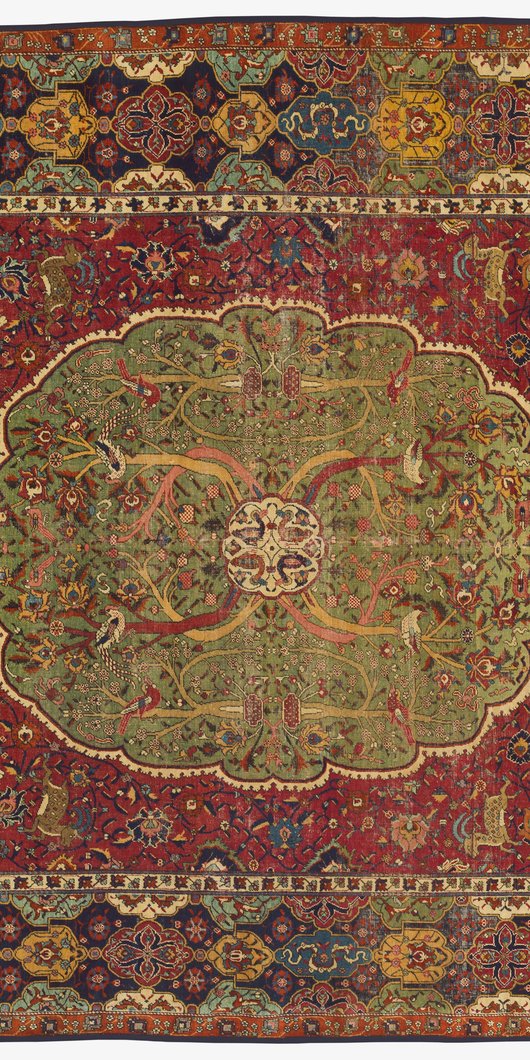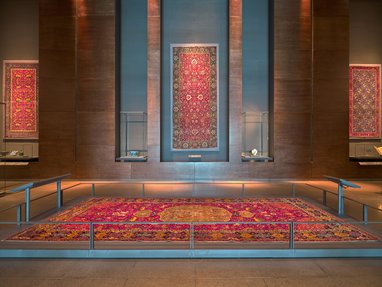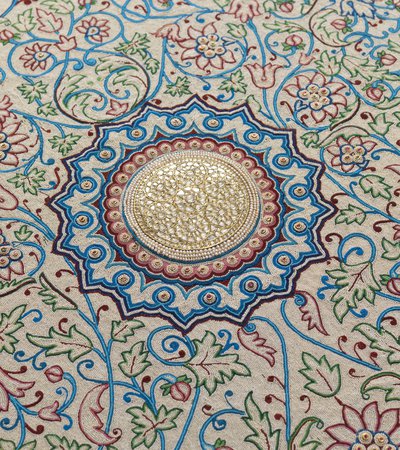Between the 8th and 13th centuries AH (14th to 19th centuries CE), Iran defined its geographic territories and expanded its political influence. Ruling dynasties created cultural and artistic languages that were widely appreciated beyond Iran’s borders, especially in the courts of Central and South Asia, where Persian was often the official language. Diplomatic and trade relations were also established with European countries as Iran became a key political partner. High-quality carpets, textiles and manuscripts were prized possessions of the elite and important exports for Iranian economy.
The Shah Suleiman-Morosini Hunting Carpet represents a splendid example of Persian carpet-making with its intricate design, vivid colours and meticulous craftsmanship. This large carpet, with its monumental yet harmoniously conceived design and remarkable state of preservation, is a masterpiece of Safavid carpet knotting.





